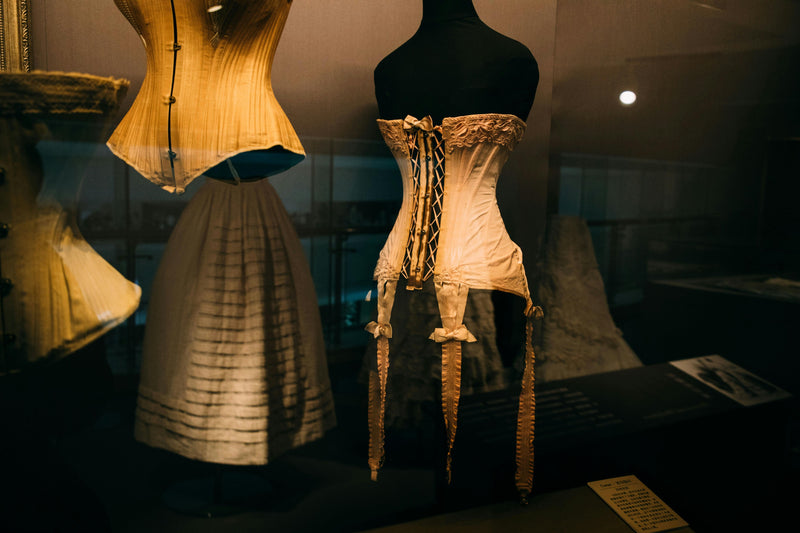
Corsets vs. Waist Cinchers: Understanding the Differences
People often confuse corsets and waist cinchers, assuming they serve the same purpose. While both are used in waist training to achieve a slimmer waistline, they differ significantly in construction, functionality, and overall effectiveness.
Definitions:
Corsets:
• Structure: Stiff garments that support and shape the torso, typically featuring back lacing and front fastening.
• Materials: Usually made from durable fabrics like satin, cotton, and leather, reinforced with steel boning.
• Purpose: Designed to create an hourglass figure by cinching the waist and emphasizing the bust and hips.
Waist Cinchers:
• Structure: Shorter and less rigid than corsets, resembling a wide belt.
• Materials: Made from elastic and flexible materials like nylon, latex, plastic, and spandex, sometimes with plastic stiffeners.
• Purpose: Provide moderate waist compression, making the waistline appear slimmer by 1 to 3 inches.
Notable Differences:
1. Construction:
• Corsets: Constructed with steel boning for durability and strength. The steel boning allows for significant waist reduction and reshaping.
• Waist Cinchers: Made with elastic and flexible materials for comfort and ease of wear. They may include plastic stiffeners for support but lack the rigidity of corsets.
2. Fastening and Tightening:
• Corsets: Use laces at the back and a busk at the front for tightening. The laces allow for adjustable compression and a custom fit.
• Waist Cinchers: Typically feature hooks and eyes for fastening, allowing for limited adjustment compared to corsets.
3. Styles and Aesthetics:
• Corsets: Available in various styles, including overbust and underbust designs. They come in multiple shapes and shades, offering options for both outerwear and undergarments.
• Waist Cinchers: Available in a range of colors, patterns, and styles, including simple waist trainers and thong bodysuits. They are designed for wear under clothing to provide a smoother silhouette.
4. Effectiveness in Waist Training:
• Corsets: More effective for dramatic waist reduction and reshaping. Ideal for those seeking significant changes and a traditional hourglass figure.
• Waist Cinchers: Provide moderate waist slimming and are often used as part of a weight loss program. They are less dramatic in their results but offer more comfort and flexibility.
5. Comfort and Wearability:
• Corsets: May be less comfortable due to their rigidity and are often worn for shorter periods. They can be worn at night, but this may not be suitable for everyone.
• Waist Cinchers: Generally more comfortable and can be worn for extended periods, including during workouts and overnight.
Pros and Cons:
Corsets:
• Pros: ◦ Provide a dramatic hourglass shape. ◦ Can be tightened for a custom fit. ◦ Supportive for the back and posture. ◦ Durable and long-lasting.
• Cons: ◦ Inflexible and expensive. ◦ Can be uncomfortable for prolonged wear.
Waist Cinchers:
• Pros: ◦ Less bulky and can be worn under any dress. ◦ Comfortable for overnight wear. ◦ Suitable for wearing during workouts.
• Cons: ◦ May restrict breathing. ◦ Finding the right fit can be challenging for those with significant body weight.
Materials:
Corsets: • Made from satin, cotton, and leather. • Reinforced with steel boning and laced with satin for tightening.
Waist Cinchers: • Made from synthetic materials like nylon, latex, plastic, and spandex. • Sometimes reinforced with steel boning for additional shaping.
Conclusion Both corsets and waist cinchers have their unique benefits and drawbacks. Your choice between the two should depend on your specific goals, body type, and comfort preferences. Corsets offer more dramatic reshaping and are ideal for achieving a vintage hourglass figure, while waist cinchers provide moderate compression and greater flexibility for everyday wear and workouts. Always ensure proper hydration and a balanced diet while using either garment to support your waist training journey safely.



